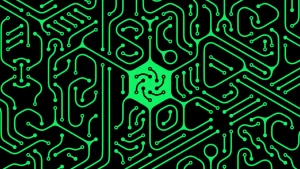
Artificial intelligence is booming. Our world is rapidly transforming. AI is fueling a new era of progress — and it’s only just beginning. But there’s one big question we haven’t quite answered yet: How are we going to power it all? Here’s the catch: AI needs a lot of energy — way more than we’re currently producing.
Training large language models and running massive data centers takes an enormous amount of electricity.
This week, as tech leaders like former Google CEO Eric Schmidt and Scale AI’s Alexandr Wang warned Congress that the U.S. isn’t ready to handle the energy demands of AI, Donald Trump stepped in with his own solution:
Coal. “Beautiful, clean coal,” as he puts it.
It’s a headline-grabbing idea, but one that completely misses the mark. Let’s be clear: AI is 21st-century technology. Coal is 18th-century fuel.
Trump signed a series of executive orders for reviving the coal industry — including one explicitly targeting the AI boom. The order directs federal agencies to figure out how coal-fired power can support America’s growing network of data centers. It even calls for identifying where coal infrastructure might be used to power AI directly.
“We need more than double the electricity we currently have,” Trump said, standing behind a podium surrounded by miners.
It’s a striking moment: one of the world’s most transformative technologies could, in Trump’s vision, be powered by one of its dirtiest, most outdated fuels.
The Real Problem: AI’s Energy Appetite
Trump isn’t wrong about the energy problem. According to studies cited in a recent Congressional hearing, AI could drive a 15% jump in U.S. energy demand in the next five years. That’s massive — especially compared to the historic average of just 0.5% annual growth.
Data centers — the physical heart of AI — are projected to consume nearly 10% of all U.S. electricity by the end of the decade.
“We need energy in all forms,” said Schmidt. “Renewable, nonrenewable, whatever. It needs to be there, and it needs to be there quickly.”
But here’s the issue: Coal isn’t quick. Or cheap. Or clean.
Coal Can’t Keep Up
Trump’s push to bring back coal ignores some tough facts:
- Only 400 coal plants remain in the U.S., down from 780 in 2000.
- Nearly half of those are scheduled for retirement.
- Coal now makes up just 15% of America’s power supply, down from nearly 50% in 2011.
Coal plants are expensive to operate and slow to build — not to mention massively polluting. Even with some retirement delays due to growing power needs, energy experts agree: coal isn’t making a comeback. And investors don’t want to fund new coal infrastructure when cleaner, cheaper alternatives like wind, solar, and nuclear are already scaling faster.
Tech companies know this. Amazon, Google, and Meta are investing billions in renewable energy to power their data centers sustainably.
This coal pivot also puts tech leaders in an uncomfortable spot. Many of them — including OpenAI CEO Sam Altman — have championed sustainable energy as the foundation for AI’s future. Altman has backed projects in solar, nuclear fusion, and carbon capture to make sure the AI revolution doesn’t come at the planet’s expense.
Now they may face a trade-off: stick to their values or risk falling behind if coal is pushed as the only available solution.
Trump’s move is about more than energy. It’s about dragging the future backward. It ties one of the most promising innovations of our time — AI — to one of the most polluting industries in modern history.
Yes, AI needs energy. But the answer isn’t turning back to coal. The answer is investing in scalable, clean, and future-ready power sources — the same kind of innovation that AI itself represents.









